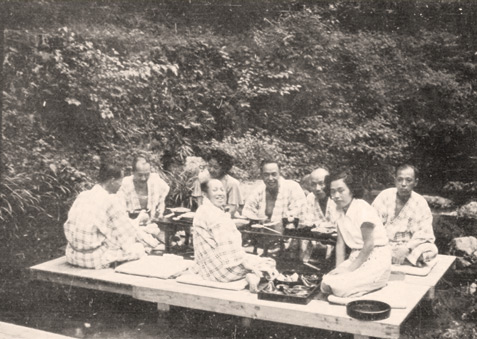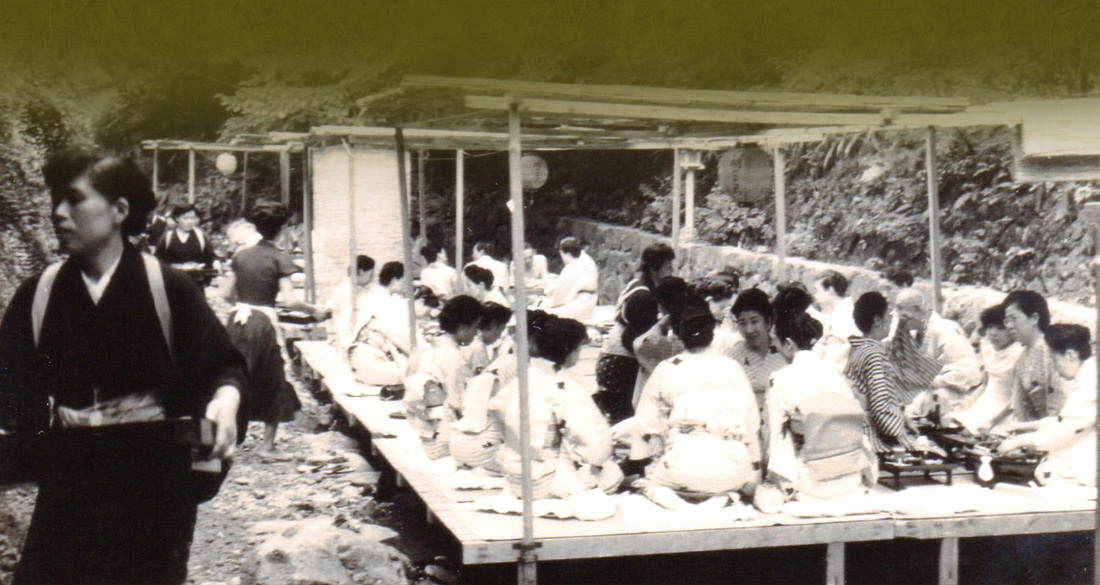
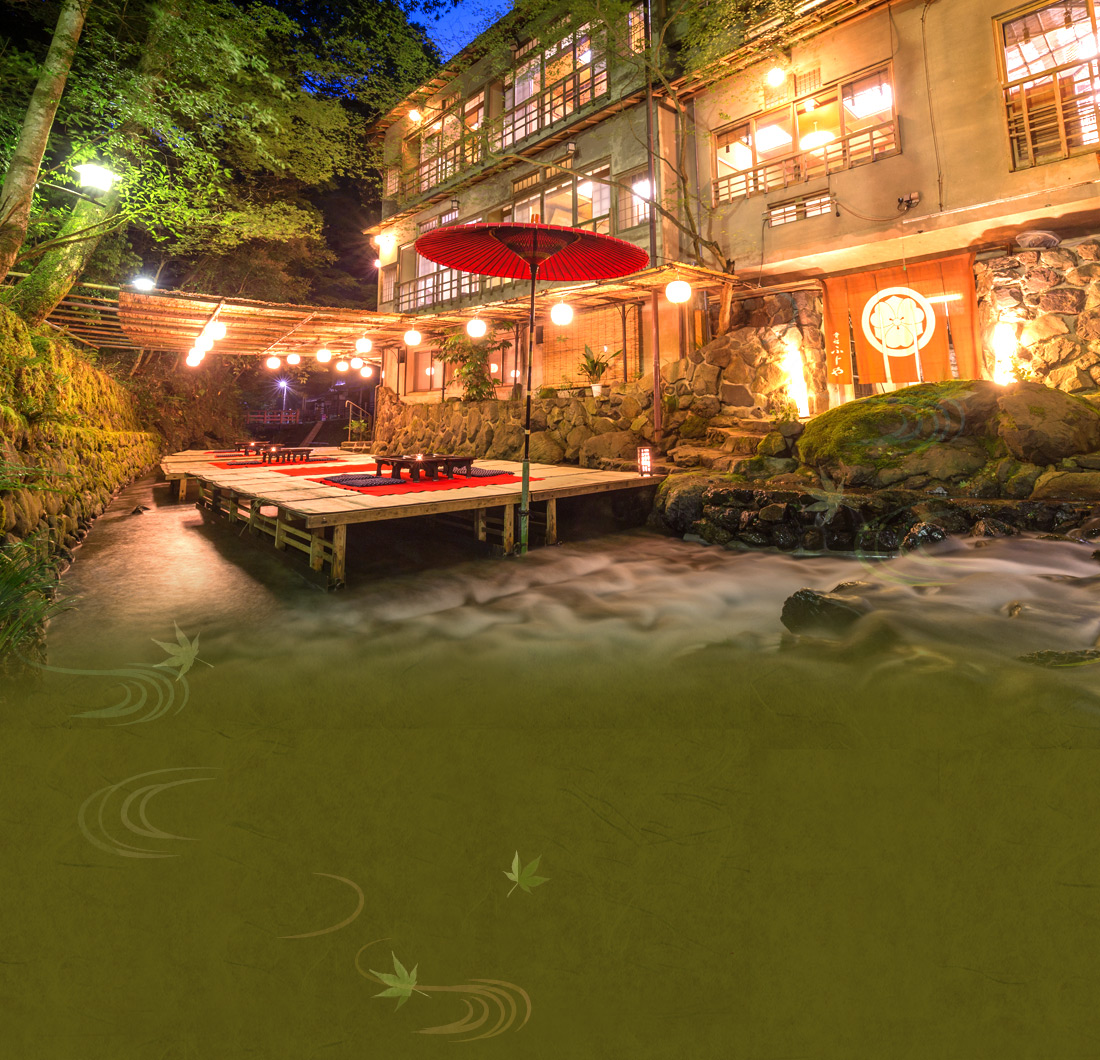
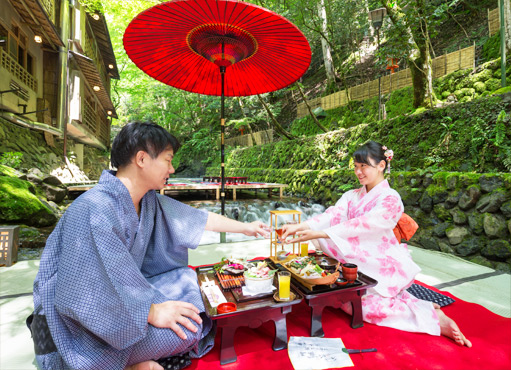

When I was still a little child during the Taisho era, my foster father, Komajiro (1873-1934) ran a teahouse and came up with the innovation of putting a bench in a river. That was the origin of Kawadoko or the bench in the river. At that time, the guests only soaked their feet in the river and enjoyed the coolness of drinking a cup of tea on Kawadoko while having dinner. During the early time of Showa from 1926 to 1989, I started to help my father with his business. Kawadoko proved to be popular among the guests and this also led to the increase in the number of the benches. After World War II, a floor on the river was built instead of the benches. After only 10 years, Kawadoko was regarded as one of the major sightseeing destinations in Kyoto.
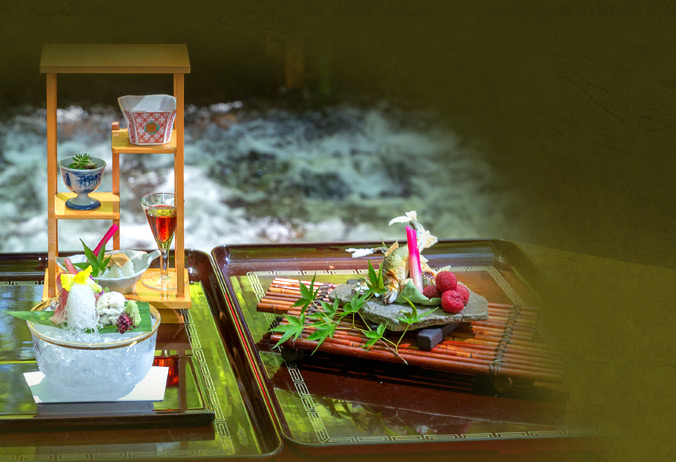
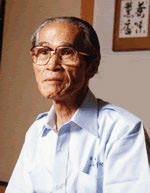

At present there are 20 Japanese-style hotels in Kibune and each landlord claims that even though the number of guests increases, the accommodation should not be enlarged due to the concept of aesthetics. Kibune is not so large so it will not change so much as well. I also think that an undesired effect would happen if we did not care about the environment and try to change the old-fashioned and rustic atmosphere.
In old days, Kibune was an important transportation hub and it was the shortest route to go to downtown Kyoto. Nowadays, almost all people go through Takao in order to go to downtown Kyoto. My hotel started from Tenpo (late Edo era) and if I remember right I am the ninth landlord. People on the way to Kyoto used to change their clothes with straw sandals to the formal dress at my hotel.
It was when my father got older that we decided to enlarge the business. Until then, my father did his job in the mountain whilst my mother, Matsu (1881-1954), cooked dinner and entertained the guests.
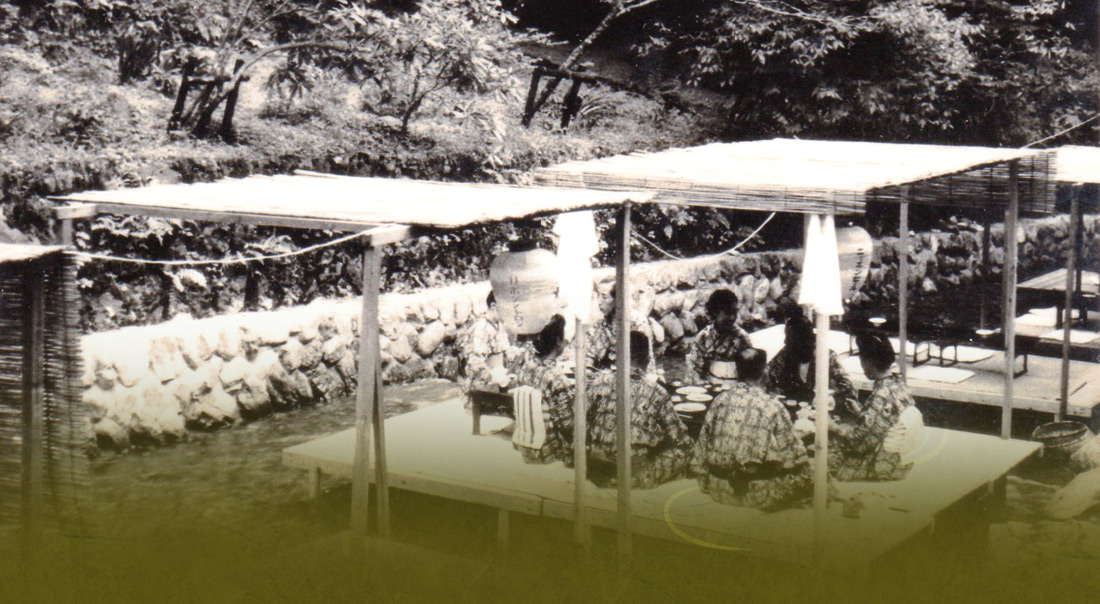

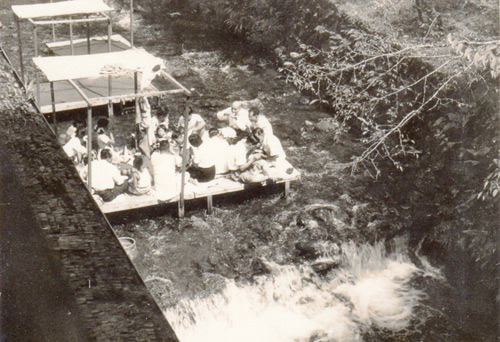
When I finished my elementary education, my father told me that education is not necessary for business and thus, I was apprenticed to the restaurant. No matter how my teacher asked my father to continue my studies, he never changed his mind and made me work as an apprentice at my aunt's restaurant in Kyoto city for 5 years.
After I came back in early Showa era, Kurama railroad (now Eizan railroad Kurama line) opened to traffic, and soon after, the bus service between Kibune shrine and the prefectural botanical garden in Sakyo Ward also started. This increase in transport facilities made Kibune more lively and busy. At that time, the floor on the river of my hotel got very popular among the guests. There were also unfortunate times that, I had to turn down customers because we were fully booked. Due to more demand, I renovated the place in 1930 to accommodate more guests. Some present day celebrities like Tanka and Haiku poets and painters, liked the environment of peace and serenity and visited often. One day a maid exclaimed "I wonder if that is really Mr. Kawabata(a famous writer in Japan)?".Tessai Tomioka, a famous artist of that time, was also a regular customer.
As the society was recovering from the devastation brought by the war, the number of the guests increased gradually especially with the establishment of the society for the sightseeing in Kibune. At the time in Kibune, there were only 5 or 6 restaurants and a teahouse. My family and I decided to maintain the hiking course and cleaned the river and the surrounding environment thoroughly. The result proved to bear its fruits as more demand came in.

During the summer days, the river makes Kawadoko a cooler place than the rest of the lowland places in Kyoto. At Kawadoko it is usually 10℃ cooler the centre of Kyoto city. When temperatures reach a high 35℃ in the lowlands, Kawadoko is usually a cooler with 22 or 23℃. Even at the peak of summer, the guests in yukata (an informal cotton kimono for the summer season) sometimes ask for coats.
In Kibune, we prepare sudare (a bamboo blind) soon after putting away kotatsu(a foot warmer with a quilt over it). Summer runs generally from June to the end of September where we prepare Kawadoko and sudare. During the winter until the end of May, the kotatsu is used. It is important to note that it is not so cold during the winter. I wonder if this has something to do with the lack of strong winds in the area One major drawback of the area is its narrowness, where we had to carry food from other places which resulted in hard labour during the war. I was chosen as the revenue officer of Kurama village in the Otagi district. In the following years, I was also chosen as the head of the village. At that time, I experienced considerable trouble of how to control the flow of food from outside. Some of the people in the village also died of starvation and malnutrition. I exhausted all my energies securing the food for 1,200 villagers under my responsibility.
I also had to do dirty work. Kurama charcoal is also known as the soft charcoal. Regrettably, I bypassed the amount of compulsory quota of charcoal for the government and to get extra wheat for my villagers. I used also to grow potatoes on very narrow land but we could get only small potatoes.

Kibune is very good place to be, except when the river floods. My house had been washed away many times by such floods. There is no record so I do not know exactly in detail but I experienced three floods: namely in 1935, 1951 and 1959. In June 1935, the shelf in the alcove was buried under the earth and sand. In 1951, the main building of my hotel was damaged because of the landslip on the hillside of Kibune shrine. In 1959, the earth, sand, as well as the trees fell into the river dam up the river and the flood overflow washed away my house, Kibune shrine and so on. Ponto town was also flooded due to the flooding of Kamo River.
Usually the river flows calmly, but it is very dangerous once it rains heavily because it has 5 km from Kibune to Seryo pass and it has a lot of branches on upper stream. Once it rains heavily, we escape with our lives and belongings to a nearby hill. There are around 20 Japanese style hotels and they have been separated into 4, where each of them managed to escape their fixed emergency areas.
Interview with Torao FUJITANI ,owner of FUJIYA,
(ASAHI newspaper 12th of June, 1977)
